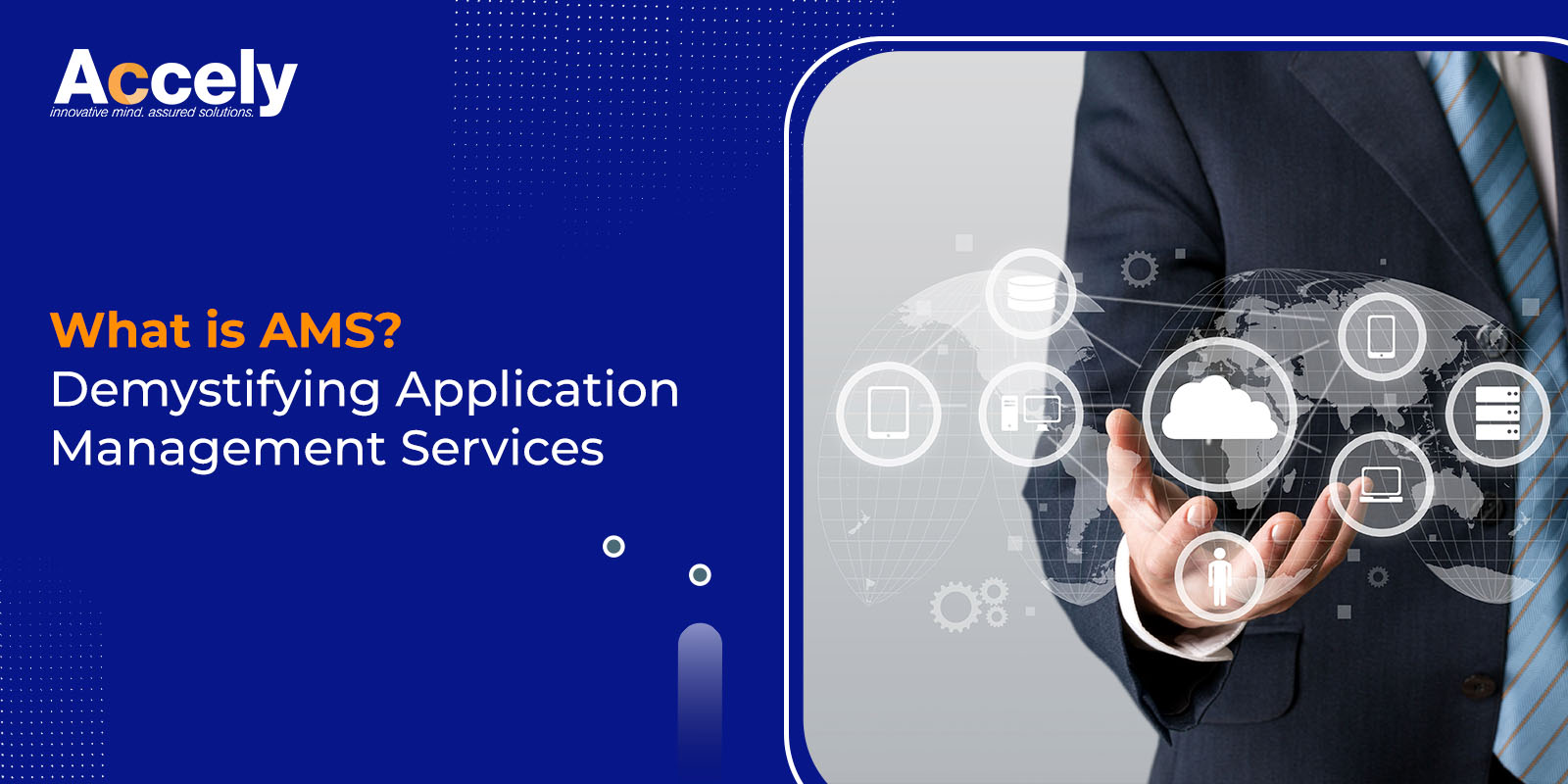What is AMS? Demystifying Application Management Services
19-Sep-2023
In today’s tech-driven world, it takes more than just powerful solutions to stay ahead of the curve. You need expert management, and that’s where SAP AMS services come in. It’s not just about getting your systems up and running – it’s about making sure they’re optimized for long-term success. We’ll delve into what AMS is, why it holds such crucial importance, and why any reputable SAP consulting company should prioritize its implementation.
What is AMS?
Application Management Services (AMS) refer to the set of processes, policies, and professionals responsible for the ongoing management and maintenance of an organization’s software applications. These are SAP managed services that cover a broad spectrum of tasks, including monitoring, troubleshooting, enhancements, and ensuring seamless integration with existing systems.
Types of AMS
There are various types of SAP AMS solutions accessible, encompassing both cloud-based and on-premise options. Certain providers offer AMS as an independent service, while others incorporate it into a more extensive range of IT services.
Employing SAP AMS support offers a range of advantages, including heightened application performance, enhanced operational efficiency, minimized downtimes, and elevated levels of security and compliance. By leveraging AMS, businesses can guarantee the seamless and effective operation of their applications, ultimately fostering business expansion and bolstering competitiveness.
Know about the AMS Process and its Steps
Assessment of Application Environment: The initial phase in the AMS process involves evaluating the organization’s existing application environment. This encompasses an in-depth analysis of the current state of applications, the technology infrastructure, and alignment with the organization’s goals and objectives.
Planning and Implementation of AMS Solutions: Following the assessment, the SAP consulting company that provides AMS collaborates with the organization to craft a tailored plan for the deployment of AMS solutions. This plan may encompass the introduction of new technologies, integration of existing systems, and development of customized processes and procedures.
Ongoing Management and Optimization of Applications: Once the AMS solutions are implemented, the provider continues to oversee and enhance the applications to ensure seamless and efficient operations. This involves consistent performance monitoring, software updates, application security measures, and other necessary maintenance activities.
Key Components of AMS
Application Monitoring (AM): Application monitoring involves the continuous tracking of applications’ performance and availability. This encompasses overseeing the status of servers, databases, and other components within the application infrastructure. By conducting application monitoring with SAP support, organizations can proactively detect and address issues before they escalate, ensuring smooth and efficient application operation.
Performance Optimization (PO): Performance optimization is the process of fine-tuning applications for optimal functionality. This includes activities like refining application code, optimizing server configurations, and identifying and resolving performance bottlenecks. Performance optimization empowers organizations to maintain applications at peak performance levels.
Maintenance, Updates, and Support: Essential to AMS, this encompasses routine activities such as software updates and security patches to uphold seamless application operation. AMS providers also extend technical support, aiding organizations in resolving any challenges that may arise with their applications.
Security Measures and Compliance Adherence: Security and compliance form pivotal aspects of AMS. This involves implementing robust security protocols to safeguard applications and data, and ensuring that applications adhere to pertinent regulations and standards. AMS providers play a crucial role in helping organizations implement top-tier security measures and remain compliant with applicable regulations.
Customization and Integration: AMS providers can tailor solutions to align with specific business needs, integrating seamlessly with existing systems and processes. This ensures a cohesive and efficient application environment.
Cost Optimization and Resource Management: SAP AMS encompasses strategies to optimize costs associated with application management while efficiently utilizing resources. This includes allocating resources effectively and identifying opportunities for cost savings.
Case Study: Overcoming E-Commerce Hurdles
In a bid to keep pace with their expanding retail empire, a prominent retail giant encountered a major hurdle with their e-commerce platform. Their in-house IT team grappled with maintaining seamless operations, leading to frequent disruptions and a loss of valuable business. To address this, the company sought the expertise of an AMS provider to take charge of their e-commerce platform. The provider implemented a holistic AMS solution, comprising application monitoring, performance optimization, and ongoing maintenance and support. The result? A notable surge in the platform’s performance, a drastic reduction in downtime, and a significant uptick in customer satisfaction.
Unveiling AMS Benefits: Real-world Success Stories
The implementation of AMS has sparked remarkable transformations for numerous organizations. These success stories include heightened application performance, streamlined operations, minimized downtime, and fortified security and compliance measures. Take, for instance, a healthcare entity that elevated its patient management system’s performance by an impressive 20% while slashing downtime by half, all thanks to AMS. Similarly, a financial services powerhouse bolstered system security and compliance adherence, ensuring smoother regulatory navigation and heightened data protection.
These tangible victories serve as powerful testaments to the immense potential of AMS. By leveraging AMS, organizations stand to gain a competitive edge, fortified by improved performance, reduced downtime, and fortified application security and compliance. It’s the all-encompassing solution organizations need to master the art of application management.
Positive Outcomes: Many organizations that adopted AMS have witnessed substantial advantages, such as enhanced application performance, boosted productivity, minimized downtimes, and elevated security and compliance standards. Take, for instance, a healthcare entity that amplified its patient management system’s efficiency by an impressive 20% while cutting downtimes in half post-AMS implementation. Similarly, a financial services entity fortified its system security and regulatory adherence through AMS.
These real-world instances vividly illustrate the advantages attainable through AMS (Application Managed Service). AMS offers a holistic approach to application management, leading to enhanced performance, reduced downtimes, and fortified security and compliance for organizations.
How to Choose an AMS Provider
- Expertise: Ensure the provider has experience with similar applications.
- Customization: The solution should be tailored to your needs.
- SLAs: Look for clear service level agreements.
- Security & Compliance: Verify a strong track record in this area.
- Cost-Effectiveness: Ensure transparency in pricing.











